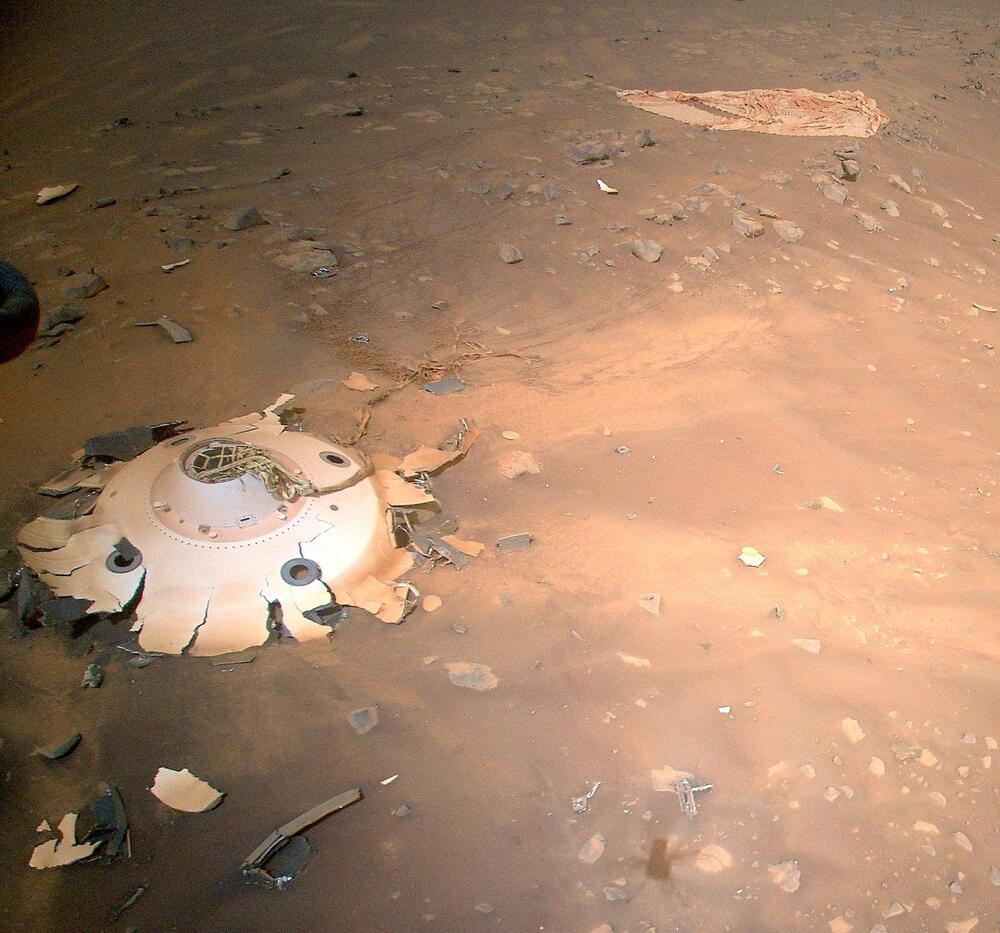
Category: transportation – Page 252


NASA’s pursuit of commercial hypersonic flight was just given an AI-powered boost
Though NASA’s aircraft may prove why electric flight isn’t the way to go. NASA is edging nearer to its first flight test for its all-electric experimental “X-plane” X-57 Maxwell after completing ground tests on the aircraft, a blog post from the space agency reveals.

Giant VR-operated humanoid robot used to fix power lines in Japan
The West Japan Rail Company (or JR West) unveiled its Gundam-style heavy equipment robot for carrying out repairs.
The robot takes on the appearance of a humanoid upper body mounted on the end of a hydraulic crane arm, which rides around on the rail system atop a specially braced rail car. The rail car can deploy stabilizing legs when it arrives at its destination along the line, allowing the robot to manipulate heavy equipment around the rail system instead of workers “to improve productivity and safety.”

Japanese rail company rolls out VR-piloted Gundam robot worker
The West Japan Rail Company has released video of its new humanoid heavy equipment robot. Mounted on the end of a crane, this gundam-style robot torso mimics the arm and head motions of a human pilot, who sees through the robot’s eyes via VR goggles.
The key objectives here, according to the company, are “to improve productivity and safety,” enabling workers to lift and naturally manipulate heavy equipment around the rail system without exposing them to the risk of electric shocks or falling.
The robot’s large torso is mounted to a hydraulic crane arm, which rides around the rail system on a specially braced rail car, putting down stabilizing legs when it’s time to get to work.


A clock beats inside the heart of every atom
In the pre-industrial age, people only needed to measure years and months to a fair amount of accuracy. The position of the sun in the sky was good enough to break up the day. Timing at the level of fractions of a second was simply not needed.
Eventually, modern industry arose. Fast-moving machines came to dominate human activity, and clocks required hands that could measure seconds. In the current era of digital technology, the timing of electronic circuitry means that millionths or billionths of a second actually matter. None of the high-tech stuff we need, from our phones to our cars, can be controlled or manipulated if we cannot keep close track of it. To make technology work, we need clocks that are faster than the timing of the machines we need to control. For today’s technology, that means we must be able to measure seconds, milliseconds, or even nanoseconds with astonishing accuracy.
Every timekeeping device works via a version of a pendulum. Something must swing back and forth to beat out a basic unit of time. Mechanical clocks used gears and springs. But metal changes shape as it heats or cools, and friction wears down mechanical parts. All of this limits the accuracy of these timekeeping machines. As the speed of human culture climbed higher, it demanded a kind of hyper-fast pendulum that would never wear down.

Wow!
The Ingenuity helicopter flew over the leftovers of Perseverance’s backshell and parachute and it looks soooo cool!
Source: https://twitter.com/NASAJPL/status/1519401118152888321

A Problem That Could Plague Rapid Transport Like Bullet Trains & Hyperloop
If you look at Amtrak’s route map, you’ll notice that the service isn’t really geared toward serving rural areas and smaller cities. Sure, they do stop at some smaller cities along existing rail routes, but those aren’t the point as much as a place to get fuel and let people get onto connecting services. On top of that issue, Amtrak largely uses the same tracks as freight trains, and the freight lines have been placed according to freight needs and not the needs of potential passengers. In one particularly weird case, it completely skips the Phoenix metro area, with the nearest station in Maricopa.
But I’m getting off topic a bit with that last one. The main point to gather from the map is that it’s designed mostly to connect larger cities with other large cities. Going from New York to Los Angeles isn’t a big deal. Going from El Paso to Albuquerque, well, even Amtrak tells you on the map that you’re getting on a Greyhound. Public transit really isn’t a priority in the United States, though. So maybe this isn’t a fair comparison. Let’s look at some maps in other countries for a minute: